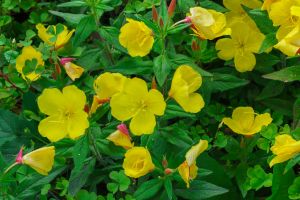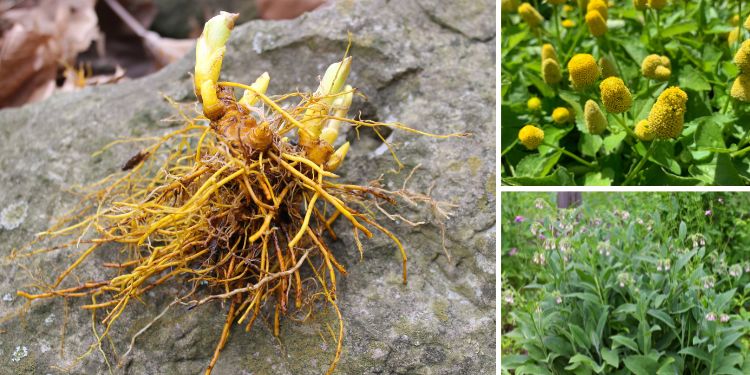
Learning how to find, cultivate, and utilize medicinal herbs is a crucial skill for seasoned preppers. Many of the pharmaceuticals we rely on today have roots in compounds derived from common plants. For instance, aspirin traces back to white willow bark. Whether you're tending to a medicinal herb garden or seeking knowledge on identifying and utilizing common medicinal plants during emergencies, here are 20 must-grow medicinal herbs for every prepper.
Evening Primrose
Evening Primrose boasts colorful yellow or pink flowers that bloom at night in spring and summer. This plant is both medicinal and edible. Native Americans traditionally brewed teas from the entire plant to address coughs, stomach aches, and sore throats. The root, flowers, and young leaves are not only edible but also rich in nutrients like vitamin C. Additionally, roots and stems were utilized to create poultices and tinctures to accelerate healing for cuts and bruises.
California Poppy
California Poppy, an edible and medicinal flowering plant, blooms from late winter to early spring. Native American tribes leveraged its roots to produce a natural analgesic for pain management. Unlike opium poppies, California Poppy lacks narcotic or addictive effects. It aids in sleep, anxiety reduction, and pain relief. The golden flowers and poppy seeds are consumable, while the pollen serves as a dye. While many tribes used California Poppy medicinally, others avoided it due to potential toxicity when improperly prepared.
Calendula
Calendula, blooming from late fall through spring, originally hails from Southern Europe and gained global popularity for its health benefits. Dried calendula petals find use in tinctures, infusions, ointments, and wound-cleaning solutions to prevent infections. This plant can also be transformed into a cream or salve to alleviate discomfort from certain radiation burns. Explore the world of calendula and craft potent remedies of your own.
Lavender
Lavender, a fragrant, flowering plant with over 40 known species, is most commonly used in medicinal and culinary applications. True Lavender, or English Lavender, possesses antiseptic, antimicrobial, anti-inflammatory, antibacterial, and antifungal properties. Lavender oil effectively treats skin conditions like fungal infections and cuts. Its leaves, flowers, and oils can enhance bath soaks for joint and muscle pain relief. Studies even suggest lavender accelerates wound healing.
Yarrow
Yarrow, hailed as a “life medicine” by Navajo tribes, boasts potent astringent, antiseptic, antibacterial, anti-inflammatory, anti-spasmodic, and hypotensive properties. Native Americans chewed raw yarrow leaves to alleviate tooth pain and swelling. Yarrow infusions treated earaches and infections. In European folk medicine, yarrow poultices addressed wounds, while herbal teas boosted blood circulation and liver health.

Feverfew
Feverfew, a Daisy family flowering plant, is typically harvested around Midsummer or during full bloom. Traditionally, it served as a cure-all folk remedy for migraines, stomach aches, and various other health issues. Chewing leaves or brewing tea not only eases migraine pain but also reduces migraine frequency. However, like all medications, it may induce side effects in certain individuals.
Chamomile
Chamomile, renowned for its anti-inflammatory effects, includes Egyptian, German, and Roman species commonly used in medicine. This herb boasts calming properties and aids in digestive and mild abdominal pain relief. Topically, chamomile soothes skin irritations, sunburns, and speeds wound healing. While typically consumed as a tea, chamomile also finds use in extracts, oils, poultices, infusions, decoctions, and salves.
Marshmallow
Marshmallow's roots, leaves, and flowers contain edible mucilage with soothing properties. It effectively alleviates mucous membrane irritation, making it ideal for sore throat, cough, and digestive issue treatment. Whether brewed into a tea or applied topically, marshmallow serves as a potent remedy for skin irritations and wounds. Caution is advised for individuals on diabetes medications.
Chicory
Chicory, a globally cultivated medicinal plant, offers edible parts for both humans and animals and can serve as a coffee substitute. In traditional medicine, all plant parts make topical treatments like poultices and salves. Chicory root tea induces mild diuresis, reduces blood pressure, and alleviates gallstone, kidney stone, UTI, and liver inflammation pain.
Echinacea
Echinacea's immune-boosting, anti-inflammatory properties alleviate pain, inflammation, and provide antiviral and antioxidant effects. Echinacea tea treats common cold and respiratory illness symptoms. Native Americans used echinacea topically for burns, insect bites, and stings. Echinacea supports immune health and overall well-being internally and externally.
—————————————————————————————————————————————————————————————–
By: James Cole
Title: Essential Medicinal Herbs for Every Prepper
Sourced From: www.bioprepper.com/2024/07/12/20-medicinal-herbs-every-prepper-must-grow/
Published Date: Fri, 12 Jul 2024 15:45:24 +0000


